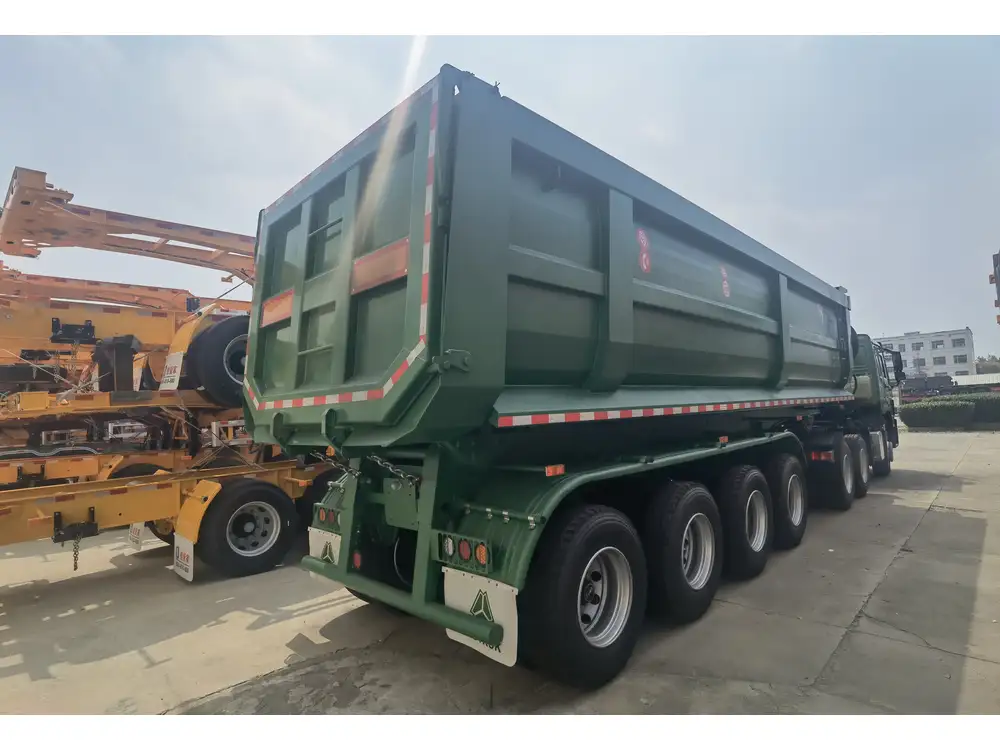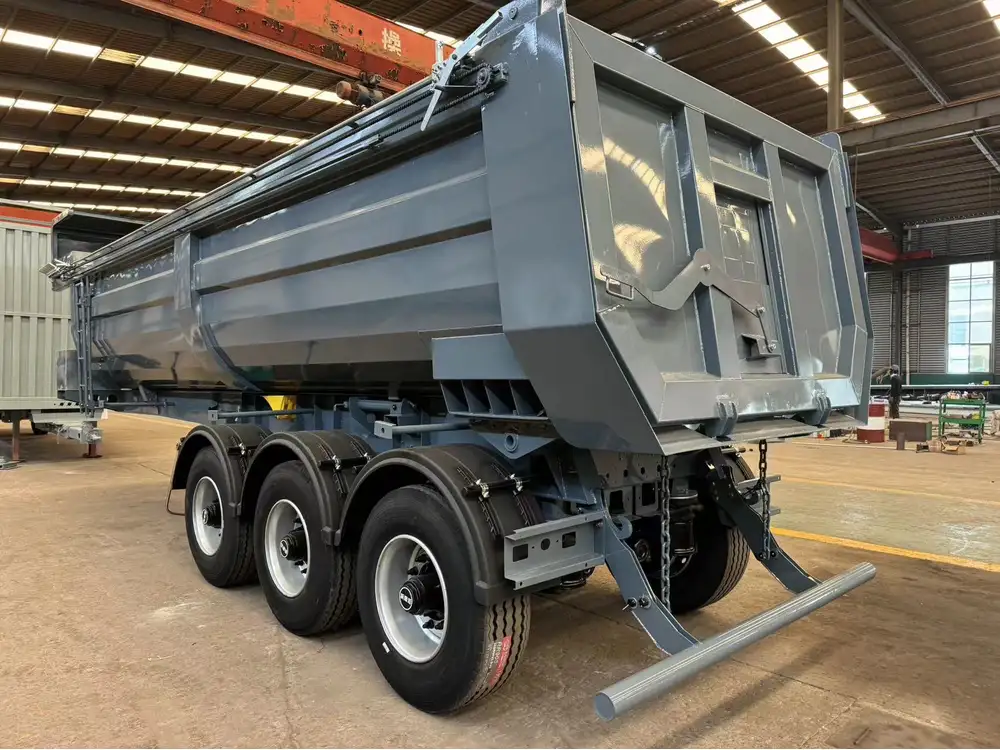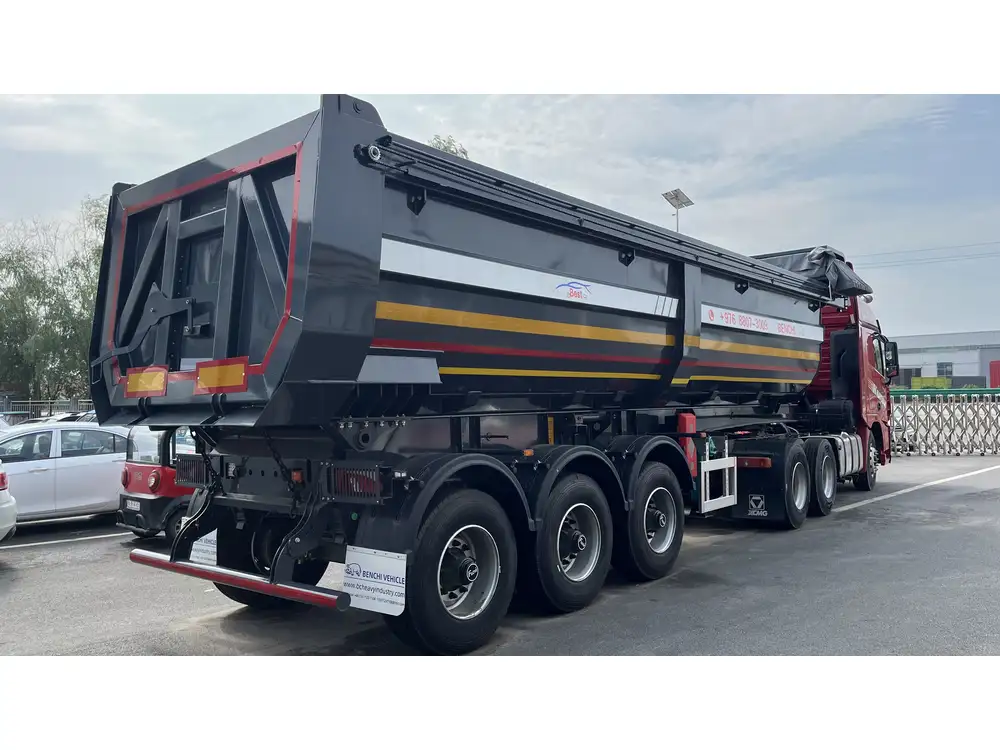When it comes to transportation and logistics, understanding the dimensions of the vehicles we rely on is crucial. Semi-trailers, in particular, play a pivotal role in the shipping and delivery of goods across vast distances. With various regulations and requirements depending on the region and load type, it’s essential to know the height specifications of semi-trailers. In this article, we delve deep into the factors influencing the height of semi-trailers and provide insights that are not just informative but actionable for stakeholders in logistics and freight industries.
1. The Basics: What is a Semi-Trailer?
Before we explore the height aspect, let’s clarify what a semi-trailer is. A semi-trailer is a type of trailer that does not have a front axle; instead, it is supported at its front by a towing vehicle. This configuration allows for greater flexibility and load-carrying capacity. The trailer’s design can significantly affect height, weight distribution, and how it fits into the overall transportation ecosystem.
2. Standard Height of Semi-Trailers
Generally, the height of a semi-trailer can range from 13.5 to 14.5 feet (approximately 4.1 to 4.5 meters). However, most common semi-trailer heights are around 13.6 feet (approximately 4.1 meters). This height is designed to accommodate both highway regulations and roadway infrastructure, such as bridges and overpasses.

2.1 Regulatory Compliance
In various jurisdictions, there are strict regulations regarding the maximum allowable height for semi-trailers to ensure safety on the roads. For instance, in the United States, the Department of Transportation regulates maximum vehicle heights to 13.5 feet, while different states may have specific restrictions. Understanding these regulations is crucial for compliance and avoiding hefty fines or penalties.
| Country | Maximum Height (feet) | Notes |
|---|---|---|
| United States | 13.5 | Varies by state |
| Canada | 13.6 | Generally aligned with U.S. |
| European Union | 13.1 | Varies by member state |
3. Factors Influencing Semi-Trailer Height
3.1 Type of Cargo
The type of cargo being transported can dictate the choice of semi-trailer height. For example, specialized trailers for transporting cars or heavy machinery may have lower height profiles compared to those carrying bulk goods or pallets.

3.2 Design Variations
Different designs of semi-trailers cater to various types of transport needs:
- Flatbed Trailers: Typically, they have lower heights to facilitate loading and unloading. They usually range from 3.5 to 4.5 feet in height.
- Refrigerated Trailers (Reefers): Standard heights are around 13.6 feet, designed to maintain temperature across all types of cargo.
- Drop-deck Trailers: These have varying heights but generally provide lower loading platforms to accommodate taller loads while remaining road-safe.
3.3 Load Height Regulations
Understanding the allowable load height is critical. An average semi-trailer with a height of 13.6 feet must factor in the height of the cargo. Regulations dictate that the cargo plus the trailer must not exceed 16.5 feet in overall height.
4. Importance of Accurate Height Measurements

4.1 Safety Concerns
Inaccurate measurements of the semi-trailer height can lead to dangerous situations. Overheight loads can result in:
- Bridge Collisions: Such events can cause property damage, personal injuries, and severe traffic disruptions.
- Increased Wear and Tear: Vehicles that consistently operate at near-maximum height may experience more significant wear, affecting maintenance costs.
4.2 Load Management
Proper height management is crucial for maximizing load capacity. Transporting oversized loads requires special permits and routing to avoid hazardous areas. Knowing your semi-trailer dimensions, including height, can make all the difference in efficient logistics planning.
5. Measurement Techniques for Semi-Trailer Heights
To accurately measure the height of a semi-trailer, consider the following approaches:

5.1 Use a Measuring Tape
- Positioning: Park the trailer on a level surface.
- Identifying the Highest Point: Measure from the ground up to the highest point—usually the roof.
- Record the Height: Ensure the measurement accounts for any equipment, cargo, or additional fixtures that could affect the height.
5.2 Utilize Mobile Apps
With advancements in technology, various mobile applications can assist in measuring vehicle dimensions. These apps can provide quick estimates and help in planning for loads and routes.
6. Examples of Common Semi-Trailer Height Requirements
Understanding general requirements can guide decision-making processes around trailer type and load management. Below is a comparison table of common semi-trailer types and their associated heights.
| Trailer Type | Typical Height (feet) | Cargo Types |
|---|---|---|
| Standard Dry Van | 13.6 | Palletized freight |
| Flatbed | 3.5 – 4.5 | Machinery, heavy loads |
| Refrigerated Trailer | 13.6 | Temperature-sensitive goods |
| Double Drop Deck | 10.6 – 11.6 | Heavy equipment |

7. Final Thoughts: The Road Ahead
When considering the height of semi-trailers, it is crucial not only to comply with transportation regulations but also to ensure operational efficiency and safety. Height is just one among many dimensions impacting the performance of semi-trailers. Every stakeholder, from manufacturers to logistics firms, must prioritize understanding these dimensions to enhance workflows and prevent mishaps.
7.1 Continuous Learning and Adaptation
Staying abreast of changes in regulations and industry standards can provide a competitive advantage. Whether you’re a fleet manager, logistics coordinator, or business owner, investing in continuous education regarding semi-trailer specifications will culminate in better decision-making.
7.2 Leveraging Technology and Innovation
Embracing new technologies—be it in measuring devices or logistics management systems—can optimize operations and enhance safety protocols. Digital solutions not only allow for more precise measurements but also facilitate the tracking of cargo journeys while adhering to regulations.

Conclusion
Understanding “how high is a semi-trailer” extends beyond mere measurements; it encapsulates regulatory compliance, safety, and efficiency in logistics. The diverse factors influencing semi-trailer height, alongside accurate measurement techniques, present numerous challenges and opportunities for those in the transportation sector. As we navigate the complexities of freight transportation, awareness of these dimensions firmly positions us on the path of operational excellence. The future of transportation lies in our hands, and with the right knowledge, we can drive it forward.



